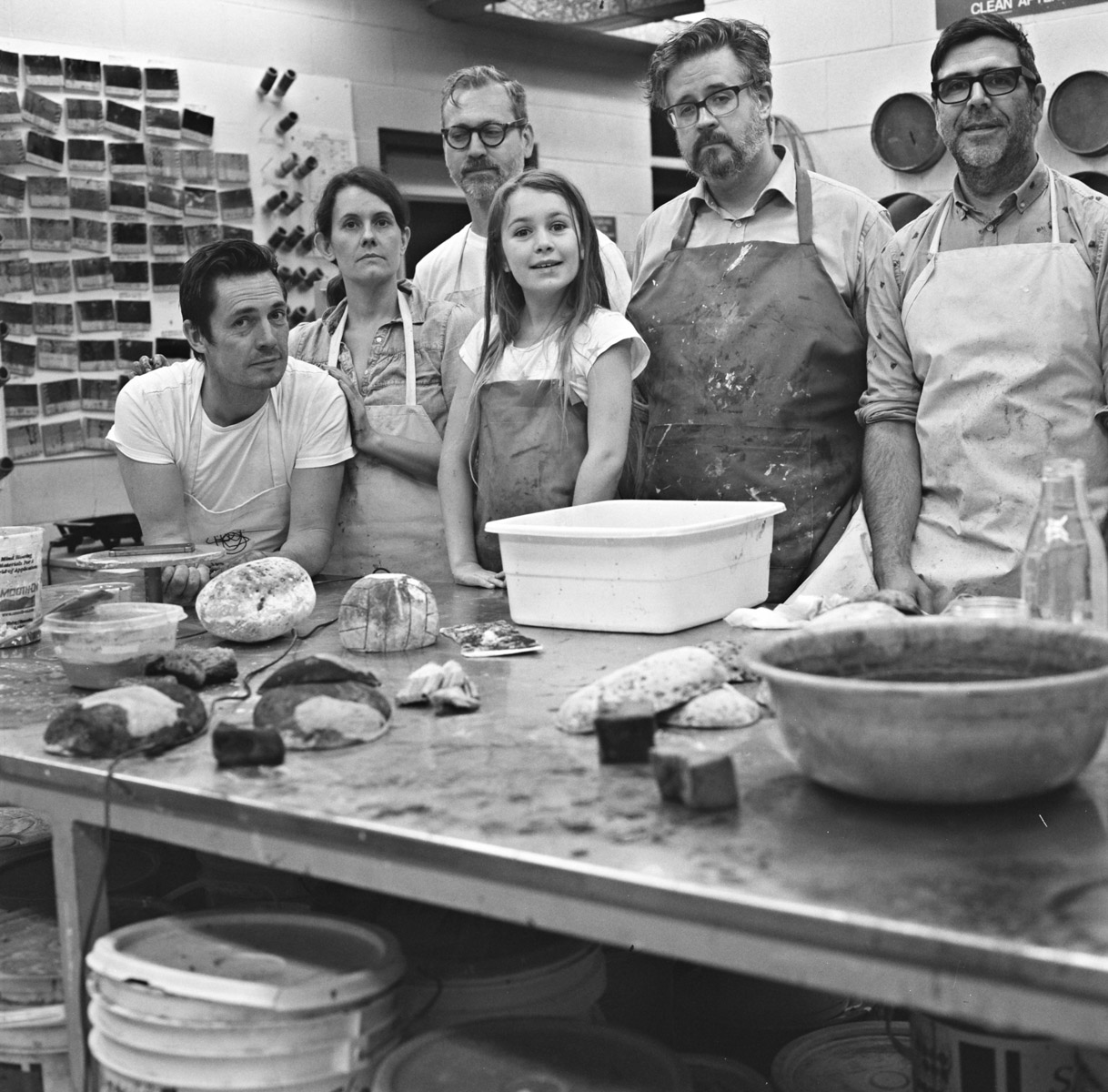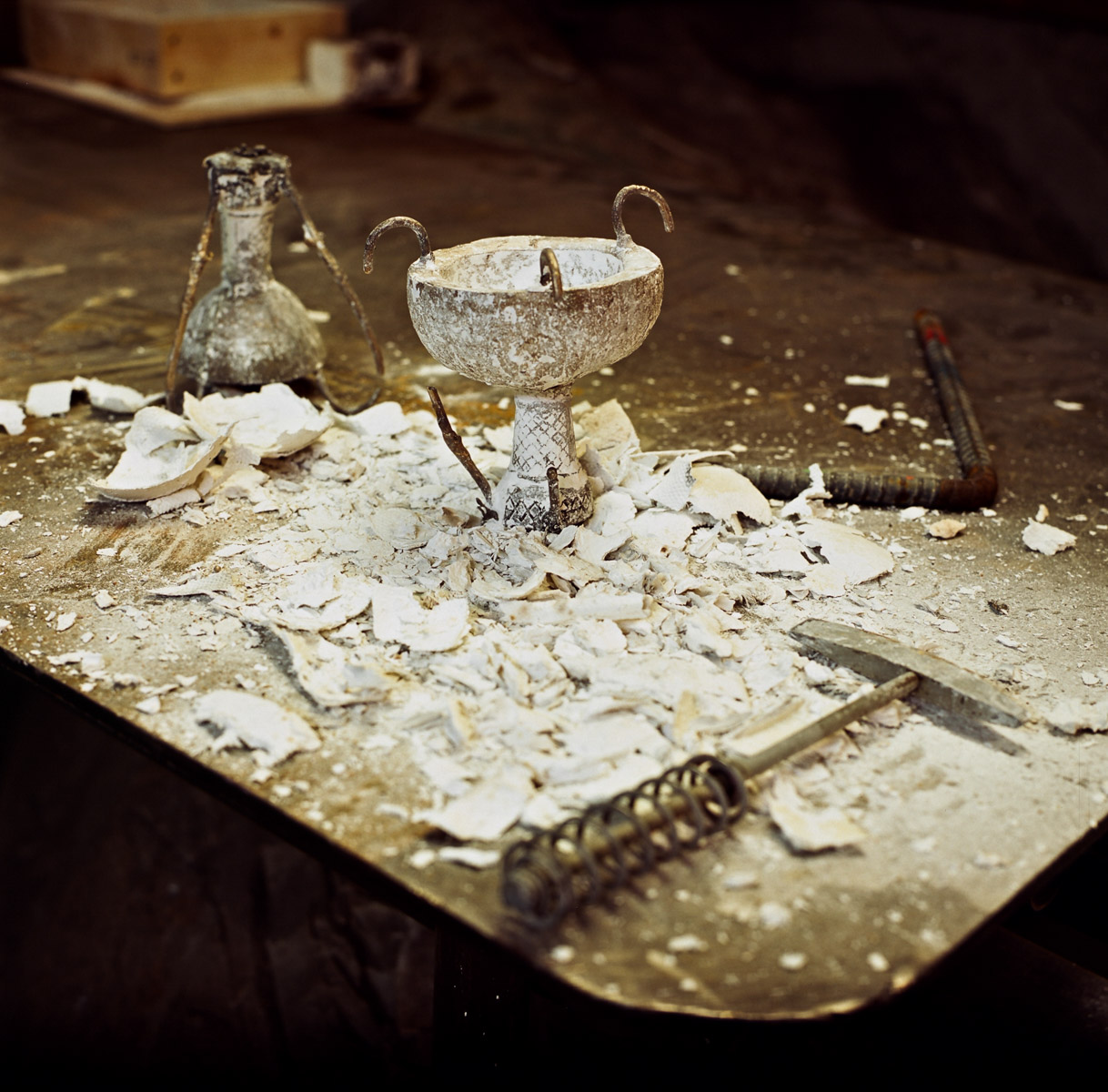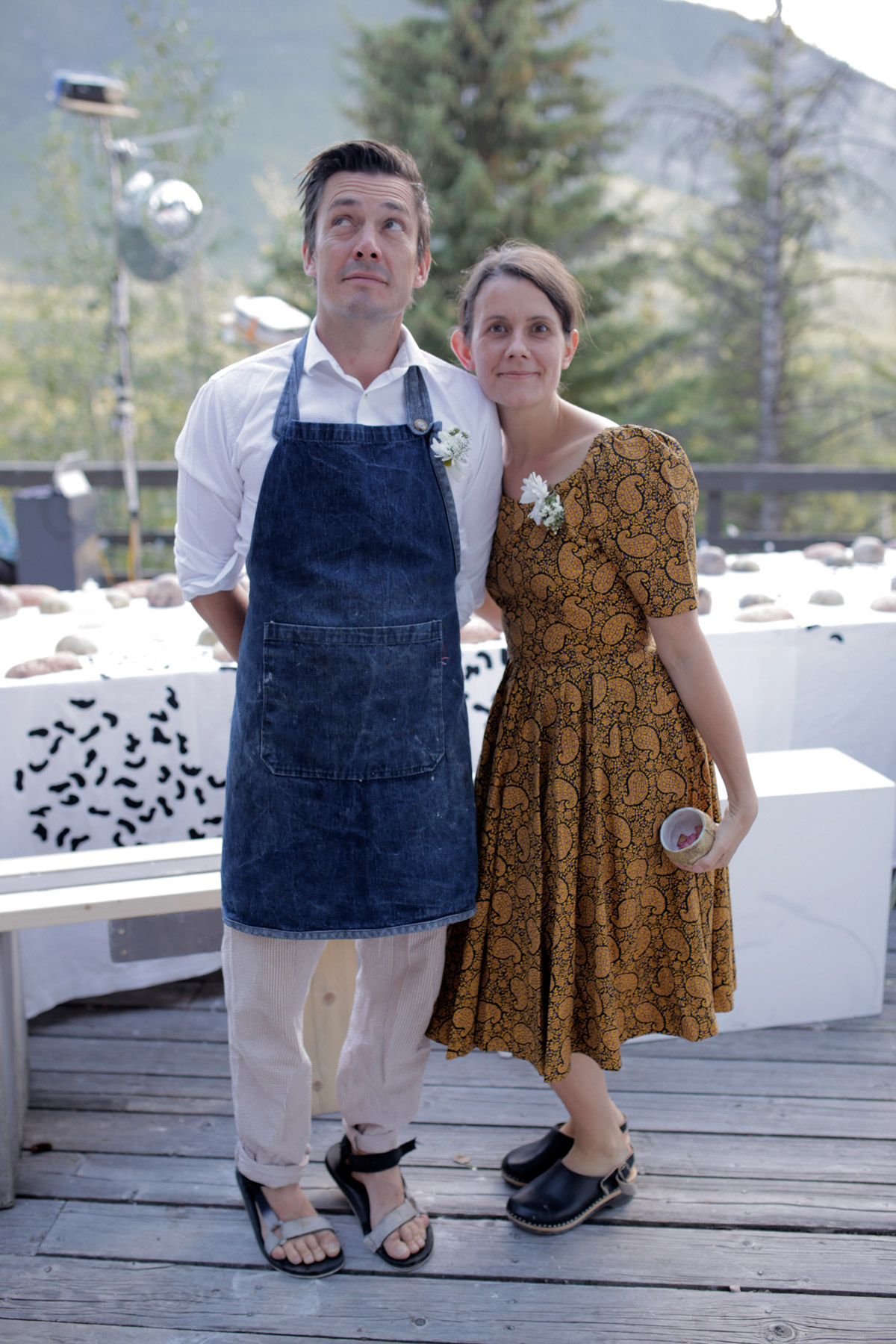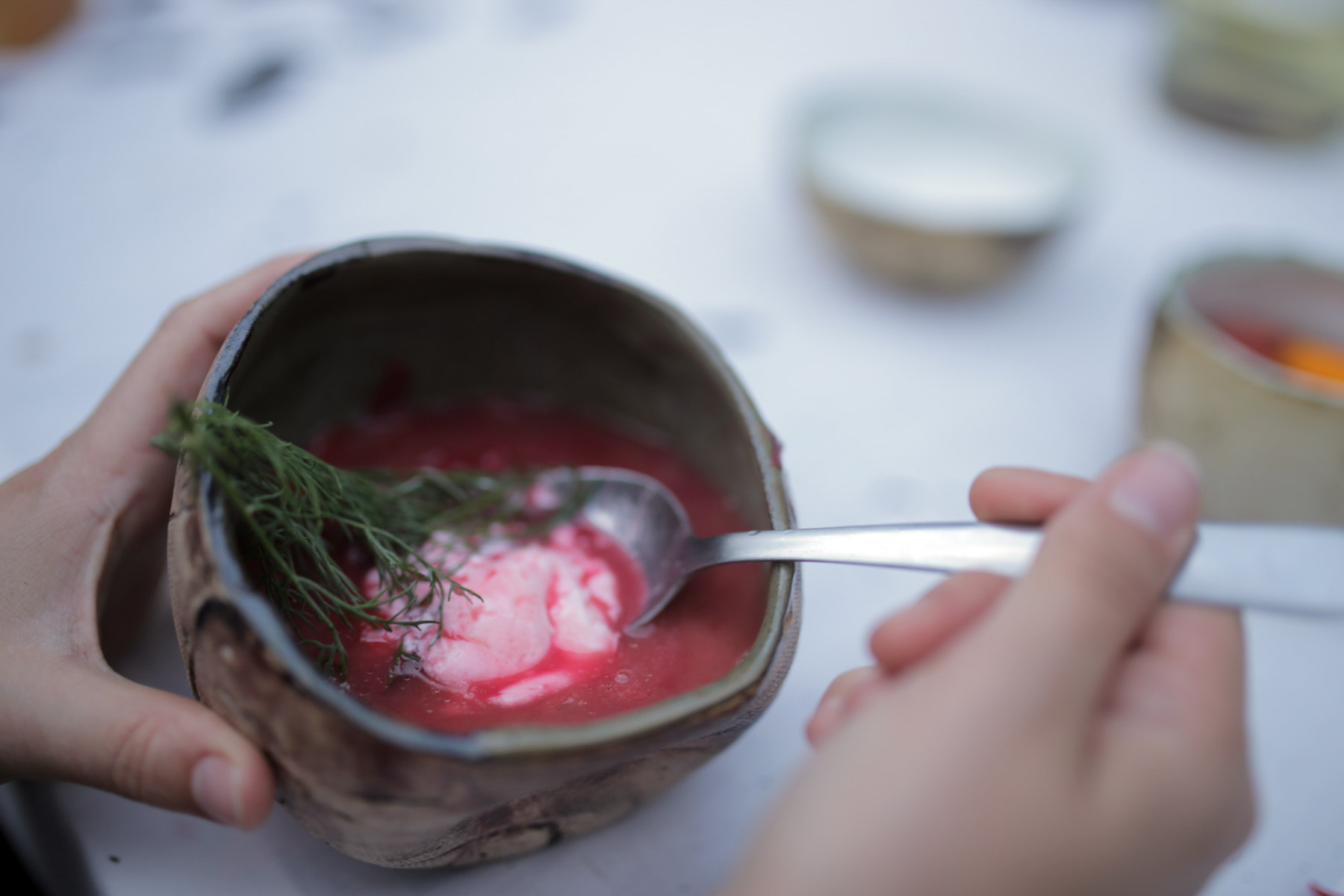2015, Banff, Canada
Impossible Rainbow Dinner
Sculpture-based performance, ceramics and food
Organized as part of a Visual + Digital Art residency at
Banff Centre, Banff, Alberta, Canada

















In the summer of 2015, the Morisons were the lead faculty at the Banff Centre (now the Banff Centre for Arts and Creativity) in Banff, in the Canadian province of Alberta, guiding a group of artists and others through a five-week thematic residency on expanding art practices outside of the gallery and in the public realm, entitled ‘Blueprint for Happiness’. They invited a variety of artists to interact with practitioners from other fields and with each other. They did so because, as artists who have collaboration at the very heart of their practice, they believed that the archetype of the solitary individual artist working on a singular project for exhibition neglects the rich, dynamic, and meaningful experience that can result from working with a diverse group of people. During the course of the residency, they organized practical workshops, discussion groups, and seminars that proposed ideas, designs, and protypes for public artworks and explored questions such as what does it mean to make art in public today, and what is the role of the artist in public discourse and the broader community?
One project on which they worked together was a large meal where guests of various disciplines were invited from across the Banff Centre campus. Called the Impossible Rainbow Dinner, it looked like any ordinary summer dinner party, but it was in fact a sculpture-based performance, a generous and anarchic collaborative dining event. The Morisons made a ceramic dinner service of two hundred and fifty pieces, enough to seat fifty people, by casting in clay objects that had significance to them to be used as cups, bowls, and plates. The punch goblets were casts of coconuts they had brought back from a recent trip to Cambodia; the borscht bowls were casts of an old abandoned football found in the bog at the back of the artists’ house in England; and the sweetcorn plates came from casts of a river rock found five minutes from where they held the dinner.
One project on which they worked together was a large meal where guests of various disciplines were invited from across the Banff Centre campus. Called the Impossible Rainbow Dinner, it looked like any ordinary summer dinner party, but it was in fact a sculpture-based performance, a generous and anarchic collaborative dining event. The Morisons made a ceramic dinner service of two hundred and fifty pieces, enough to seat fifty people, by casting in clay objects that had significance to them to be used as cups, bowls, and plates. The punch goblets were casts of coconuts they had brought back from a recent trip to Cambodia; the borscht bowls were casts of an old abandoned football found in the bog at the back of the artists’ house in England; and the sweetcorn plates came from casts of a river rock found five minutes from where they held the dinner.
Something special happened that evening, something that the artists were keen to investigate further. To that end, they decided to continue using the dinner service in future projects. Each time a meal is held, new pieces are made, new stories emerge, and the service expands. Whenever pieces are sold, others are made in their place, the service dispersing, changing, and evolving.
‘It was high summer in the mountains, so we ate dinner together in the salmon twilight from hand-hewn pottery moulded from coconuts, deflated footballs, river stones,
and straight from corn husks. Each course a colour, a texture; the tablecloth printed like black ants connecting certain place settings and people; we sat on 2 µ 4s and old concrete artworks and studio stools, table topped with wildflowers picked from the fir forest adjacent. Without sounding saccharine, this is by far one of my most special memories from Banff, if not of my life: dozens of artists, dear friends, lovers, shoulder to shoulder, thigh to thigh, hours on end, eating, listening, smoking, dancing, drinking; consuming,
each other; and how carefree those prized, time-capsuled hours felt. Conditions only ruptured by the sun rising.’
Peta Rake, Senior Curator, University of Queensland Art Museum, Brisbane
‘It was high summer in the mountains, so we ate dinner together in the salmon twilight from hand-hewn pottery moulded from coconuts, deflated footballs, river stones,
and straight from corn husks. Each course a colour, a texture; the tablecloth printed like black ants connecting certain place settings and people; we sat on 2 µ 4s and old concrete artworks and studio stools, table topped with wildflowers picked from the fir forest adjacent. Without sounding saccharine, this is by far one of my most special memories from Banff, if not of my life: dozens of artists, dear friends, lovers, shoulder to shoulder, thigh to thigh, hours on end, eating, listening, smoking, dancing, drinking; consuming,
each other; and how carefree those prized, time-capsuled hours felt. Conditions only ruptured by the sun rising.’
Peta Rake, Senior Curator, University of Queensland Art Museum, Brisbane
Photographers’ credits
Dinner images_ Caitland r.c. Brown / All other images_Ivan Morison
Dinner images_ Caitland r.c. Brown / All other images_Ivan Morison